Excerpts from Jim Conrad's
Naturalist Newsletter
from the January 17, 2016 Newsletter issued from Hacienda Chichen Resort beside Chichén Itzá Ruins, central Yucatán, MÉXICO
RED ROSE, BLUE DOOR
Having biked to Pisté to buy fruit, I decided to wander around town looking for interesting plants in people's yards. On the north side of town a long-neglected rosebush beside an abandoned building with a faded blue door caught my eye. shown below:
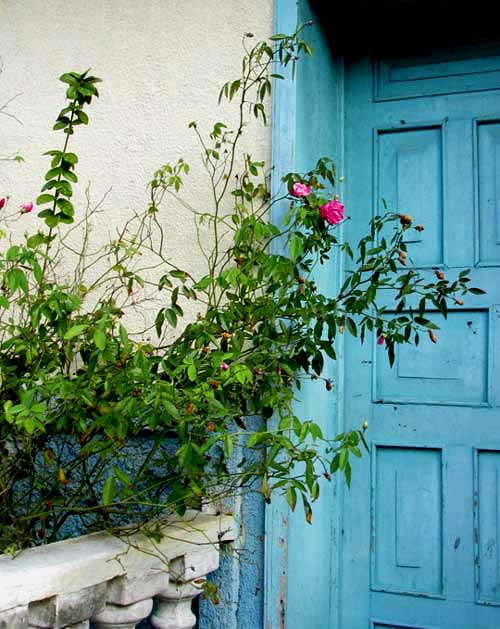
In a town where many folks live in small, unpainted cinderblock houses or huts, at one time this home with a substantial blue door and concrete balustrade must have been one of the best in town, and one wonders what its story is. Even the rosebush is something special, because roses are temperate plants, seldom seen in the tropics, except at higher, cooler elevations.
I couldn't penetrate the house's mystery, but I figured I had a chance with the rose. Who was that rose cultivar who was able to survive the Yucatan's heat and punishing dry seasons?
The single flower yielded several important field marks. First, it was fairly small, about two inches (5cm) broad, a "double" blossom in which sexual parts have developed into petals, and the color was pure "rose"color fading to white, with no hint of yellowness, as shown below:
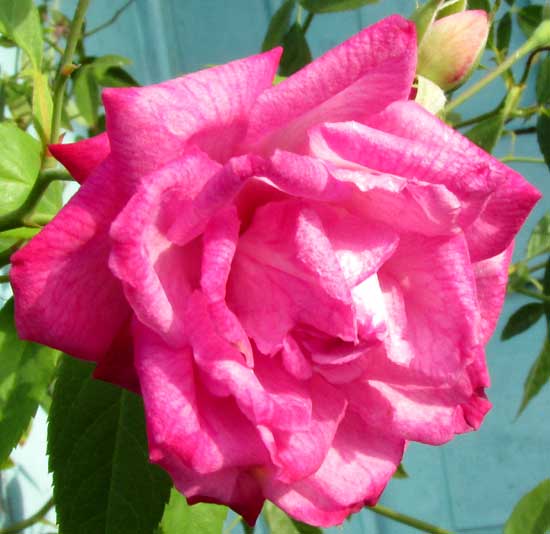
A side view shows that the green sepals below the corolla bear long, slender tips, and are velvety-white on their inner surfaces, at shown below:
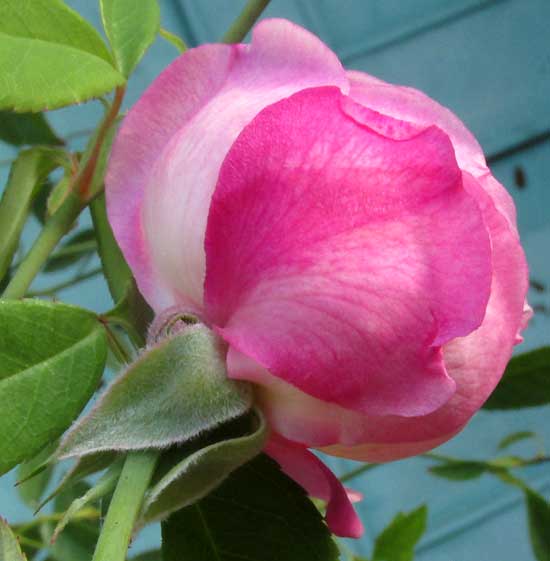
The smallish compound leaves are shown below:
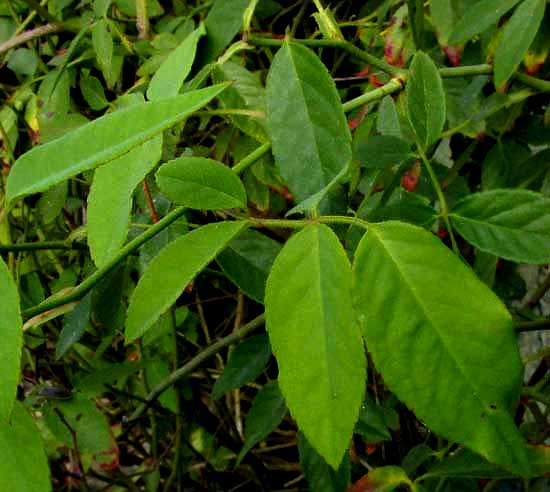
There we see that the typical leaf is composed of five leaflets, with leaflet margins bearing many small teeth -- they're "finely serrate." Also, the stems are mostly smooth, lacking bristles, with only a few scattered thick-based, curved spines on the older stems. At the picture's top, a little right of center, you see the shape of another leaf's "stipules" at the base of a petiole. Among roses, stipule size, shape and margin condition -- smooth to deeply segmented -- is important for identification, and this cultivar has well formed, distinctive ones.
Another very important field mark used in technical identification of roses is whether the flower's styles -- the "necks" connecting the ovaries with the stigmas where pollen germinates -- emerge well beyond the blossom's mouth, or whether they knot together at the mouth to form a dense, head-like "stopper." Breaking apart a blossom across the mouth revealed what's shown below:
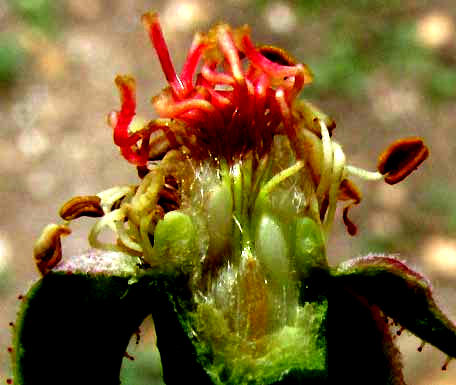
In that picture, the red, curved items are the styles, and they manifestly extend beyond the mouth, but they gather into a loose tangle instead of forming a firm, cauliflower-like column of styles as often is seen in other rose flowers. Because they're red, I'm guessing that the tangling is what happens when flowers undergo the genetic trauma associated with making them double -- turning sexual parts into petals. The red styles are tending toward red petals.
With the styles poking well beyond the mouth, the stamens with their brown anthers about the same length as the styles, the stipules looking as they do, leaves with five leaflets, and the plants growing upright instead of creeping, my old Baileys Manual of Cultivated Plants," which has a good Rose section, leads me straight to Rosa setigera. That sounds about right, because Rosa setigera, sometimes called the Prairie Rose, is an old cultivar frequently planted, and fairly tough.
Our bush's appearance differs in some points from Rosa setigera as presented on the Internet -- has much fewer spines, for example -- but we know we have a cultivar here with its genes scrambled, because it's a "double" blossom with petals where sexual parts should be, and probably it's a hybrid, to boot, so you'd expect deviations from the standard species.
In the long run, such a pretty, red rose in front of a blue door in such an unexpected place doesn't need to have its pedigree understood to give us pleasure just in the looking at it.